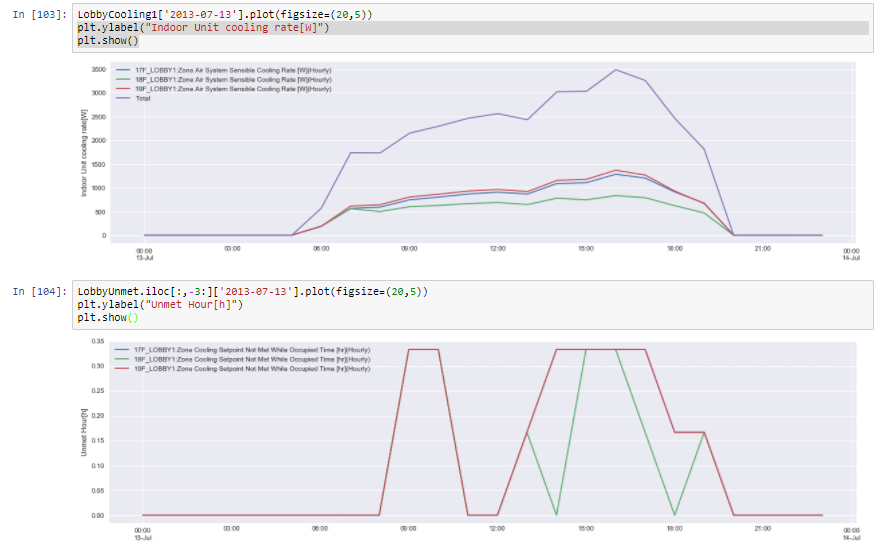Occupied unmet hours are usually caused by:
- insufficient capacity to meet the zone load
- using thermostat set back and activating set up while starting the HVAC system at the same time as occupancy starts
- for VRF systems, using many terminal units on a single VRF condenser
The result of insufficient capacity is the loss of zone temperature control. Plot the zone temperature and zone thermostat set point temperature to compare these values. It is also good at this point to plot the number of occupants and occupied unmet hours so that you know when the zone temperature deviates from the set point while there are occupants.
Starting the HVAC system at the time of occupancy usually has little effect on unmet hours IF the zone thermostat is NOT using set back. When set back is used it may take some time before the zone temperature reaches the thermostat set point so it usually helps to start the HVAC system prior to occupancy (which real systems do to avoid occupant discomfort).
For VRF systems, if the VRF condenser is overloaded, the model will limit the terminal unit capacity so that the total operating terminal unit capacity equals the VRF condenser operating capacity. At time when this limit is occurring, these report variables will show that impact.
OutputVariable,*,VRF Heat Pump Maximum Capacity Cooling Rate, Timestep;
OutputVariable,*,VRF Heat Pump Maximum Capacity Heating Rate, Timestep;








When you want to investigate unmet hours, always plot as "Detailed" frequency, not hourly. You'll be able to see if it's just a temporary capacity issue (rapid setpoint temperature changes) or something else.